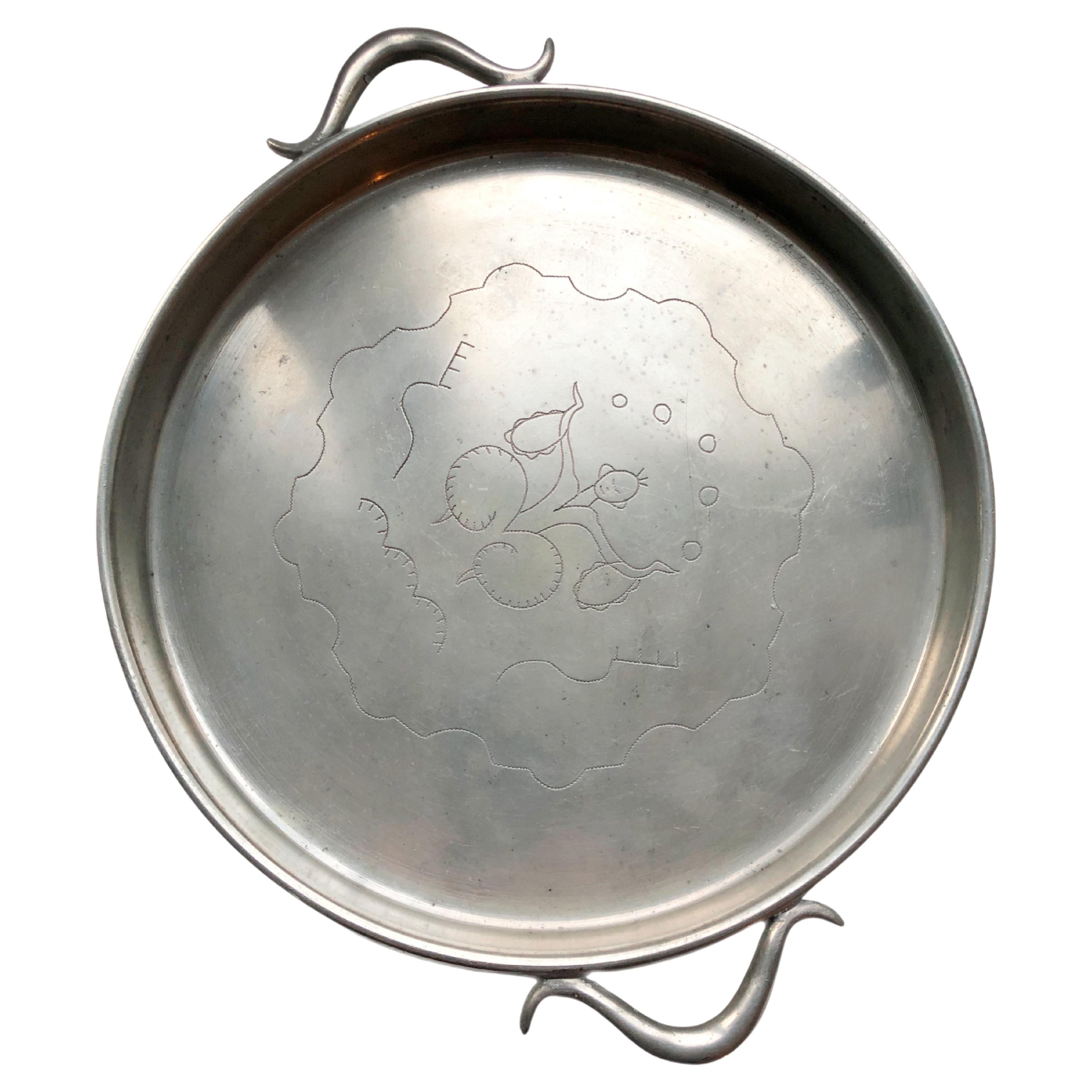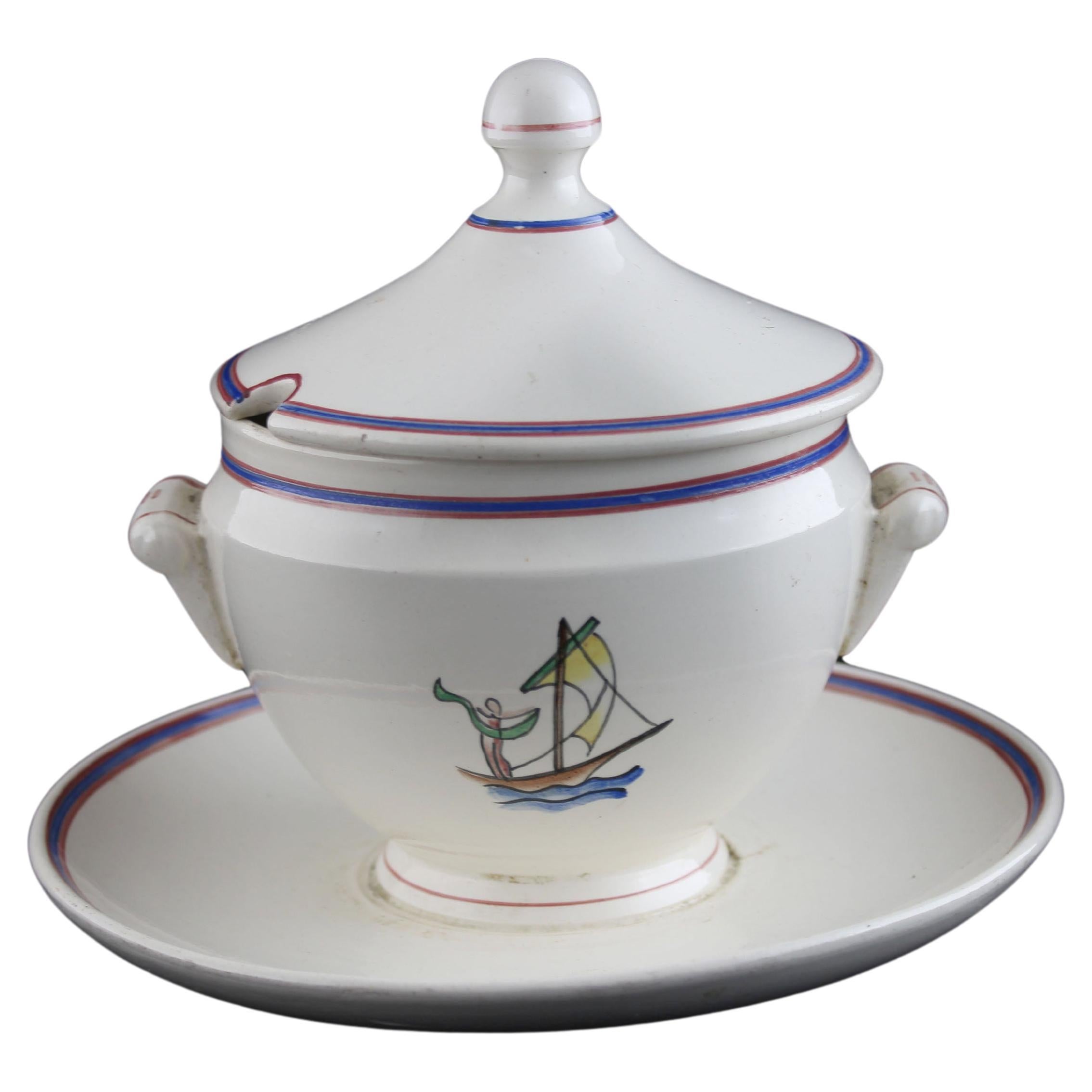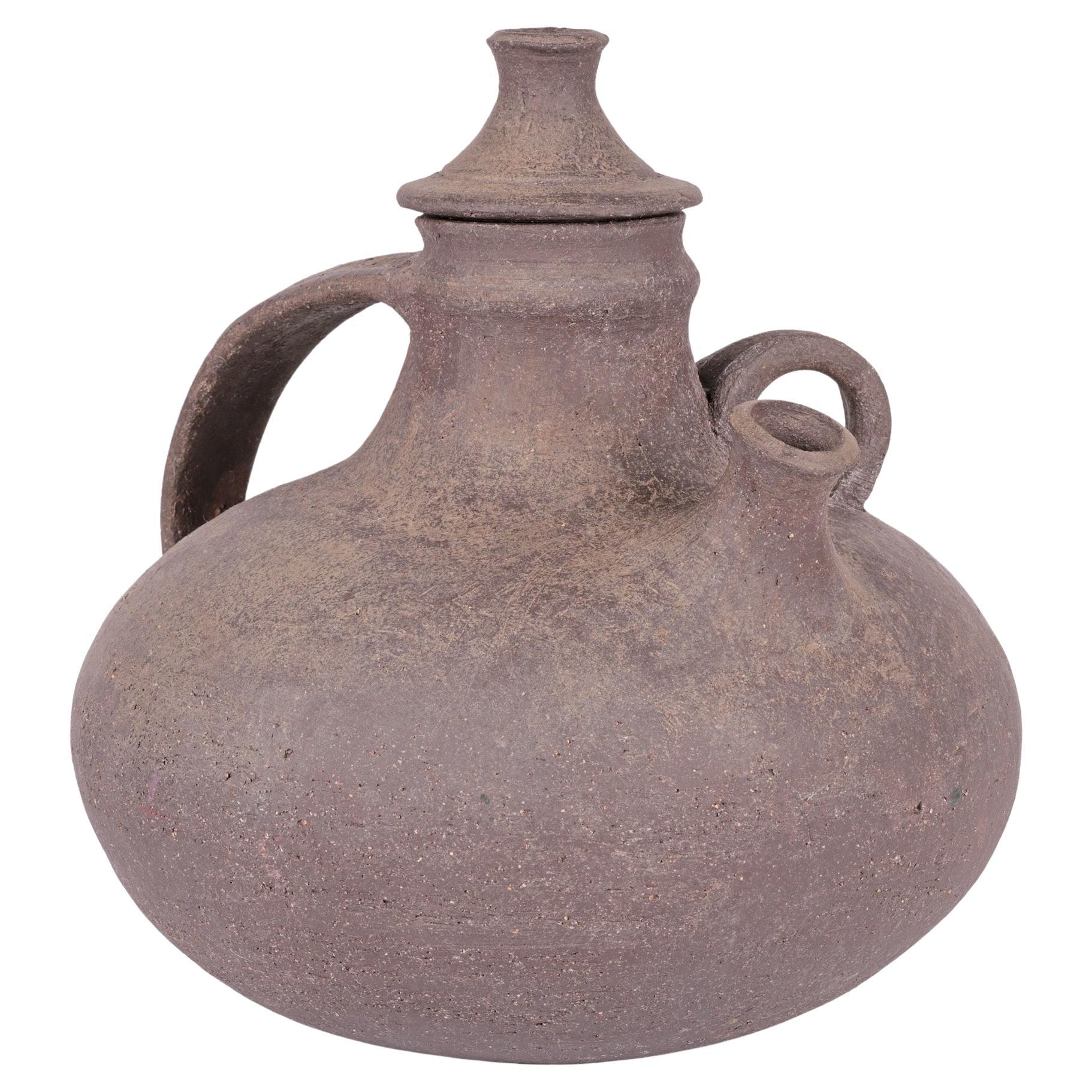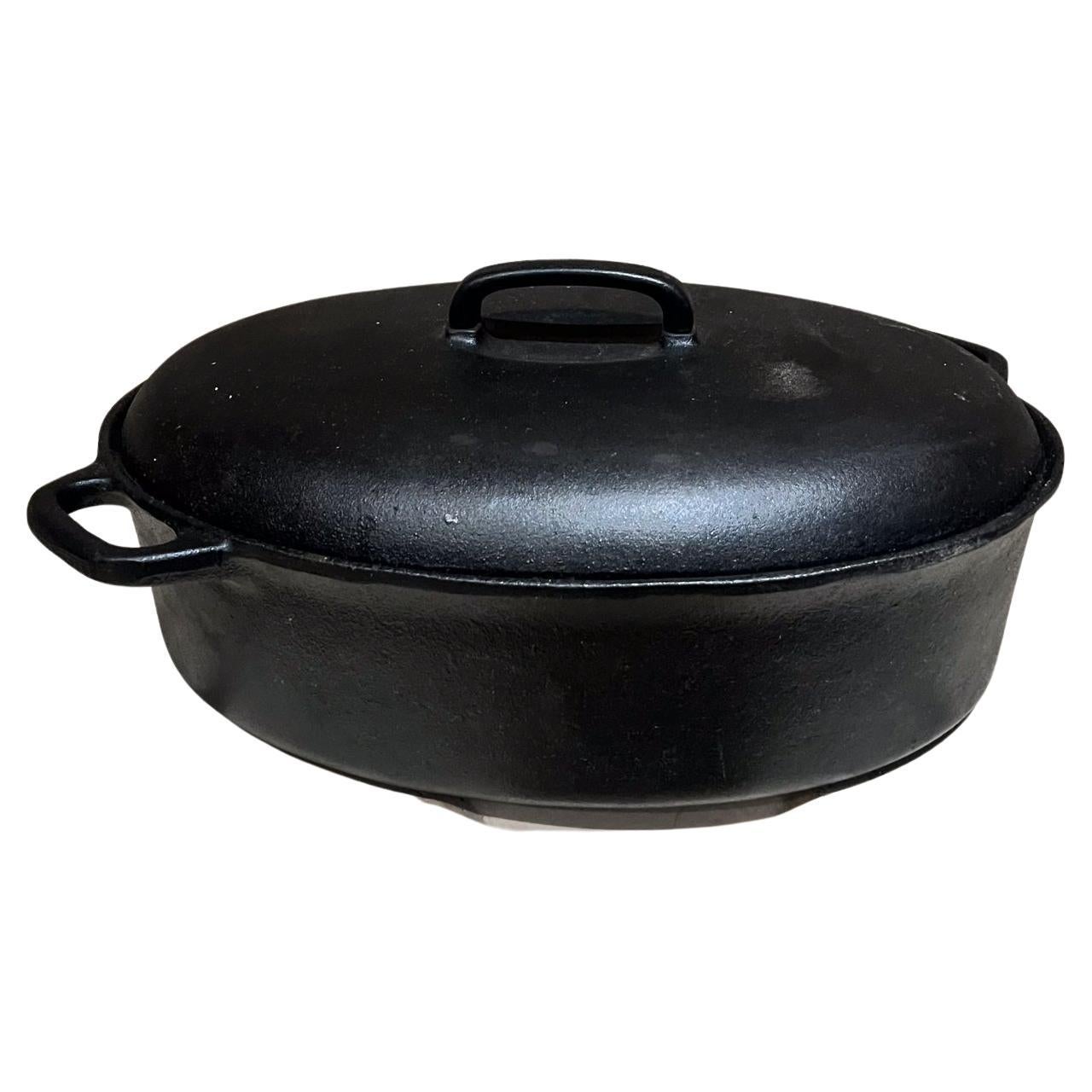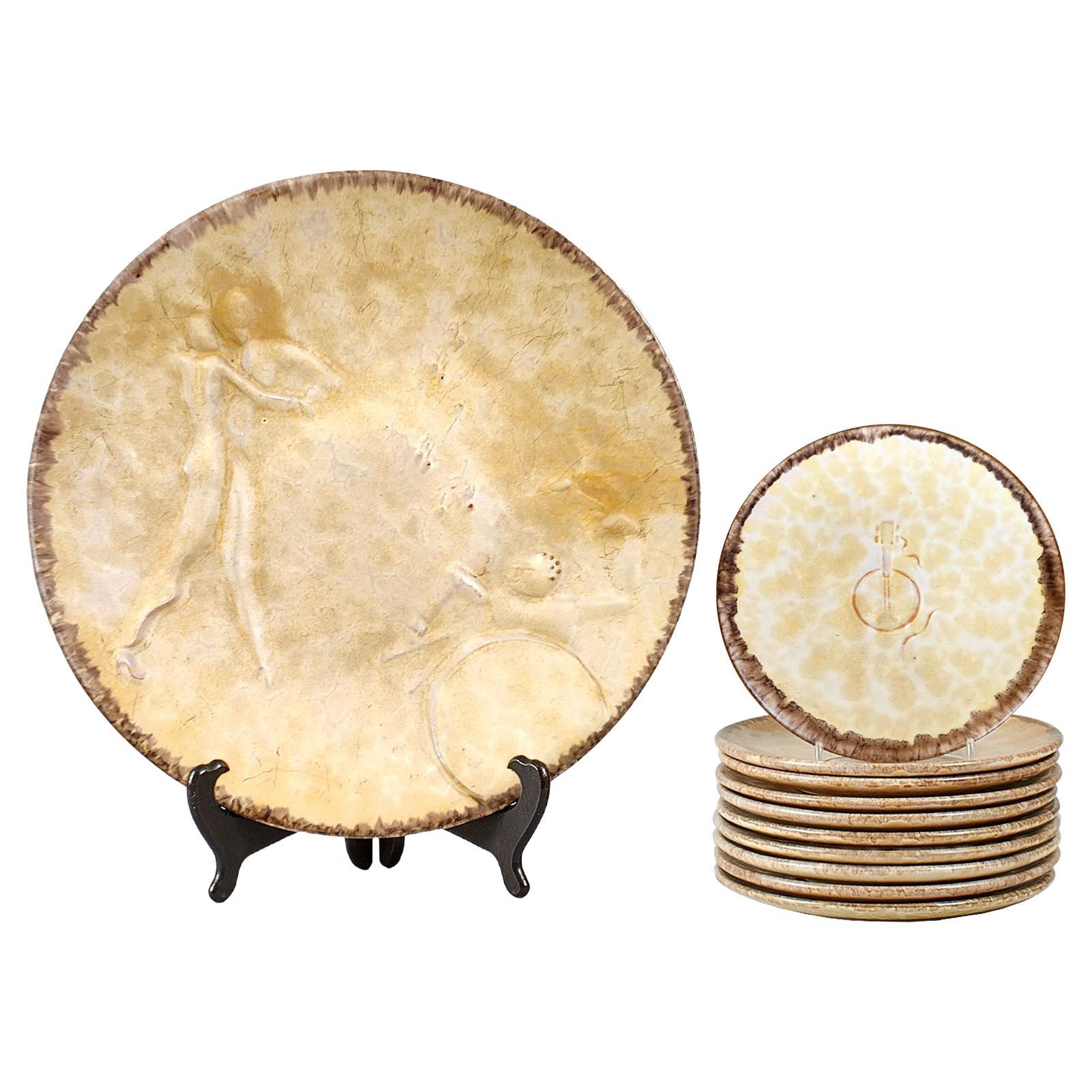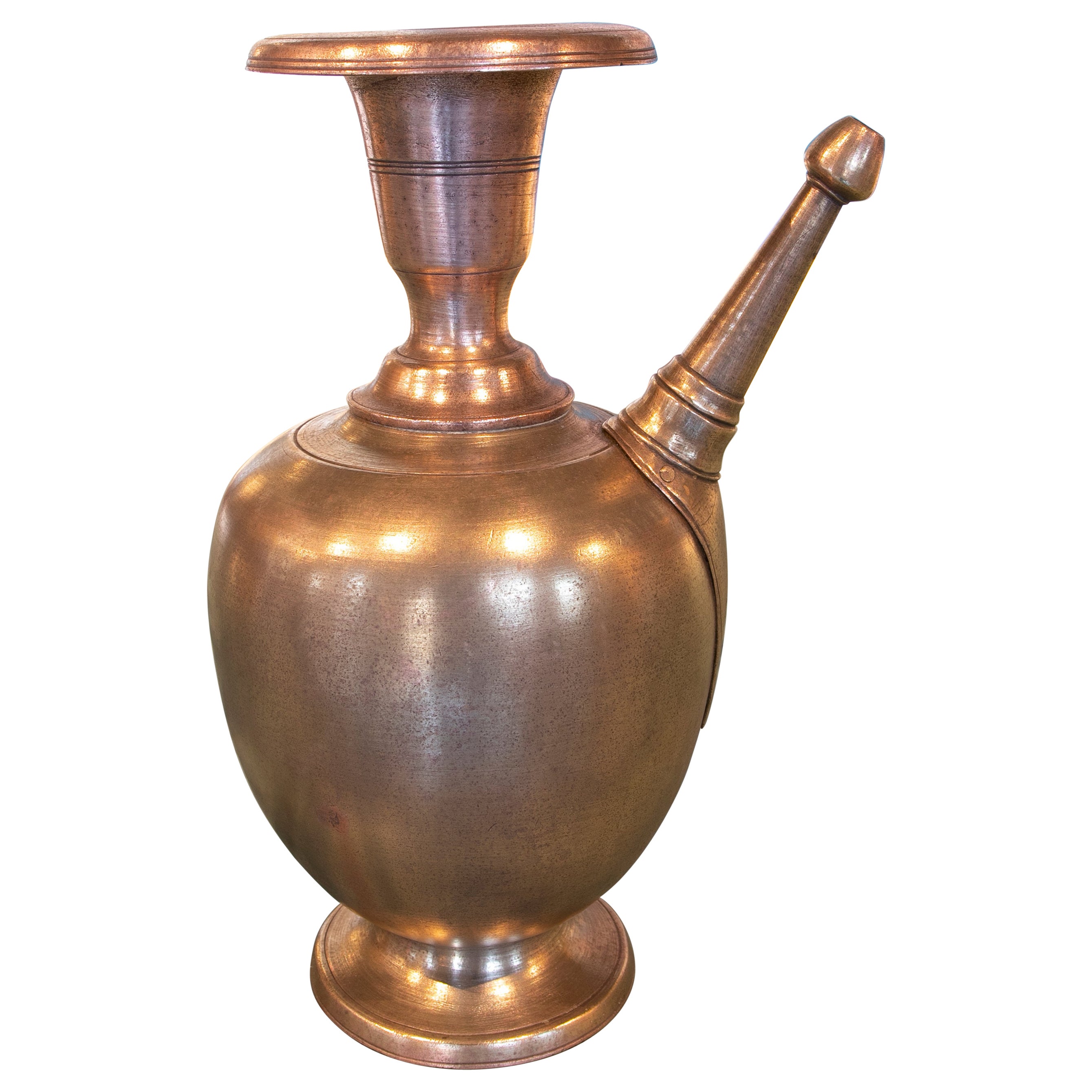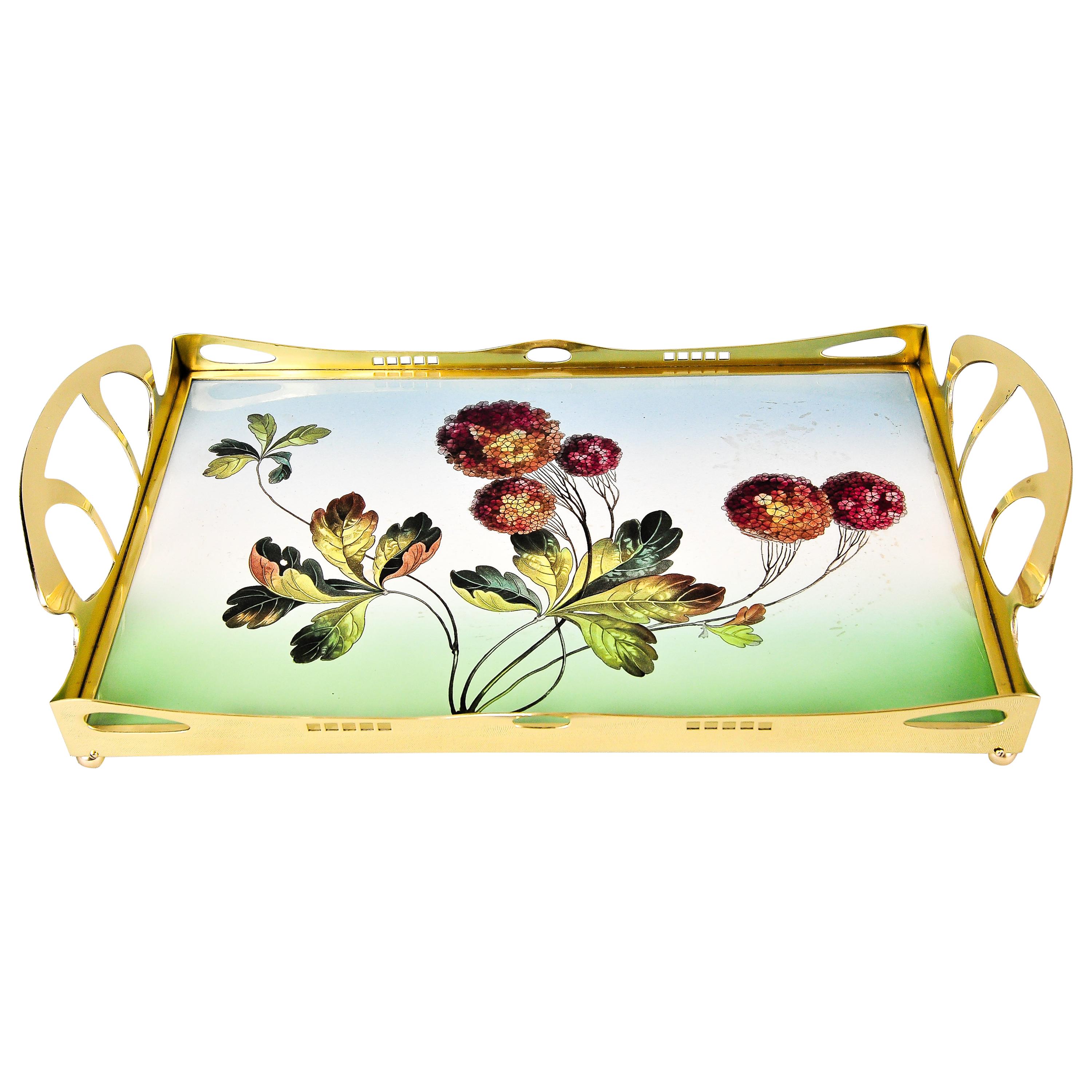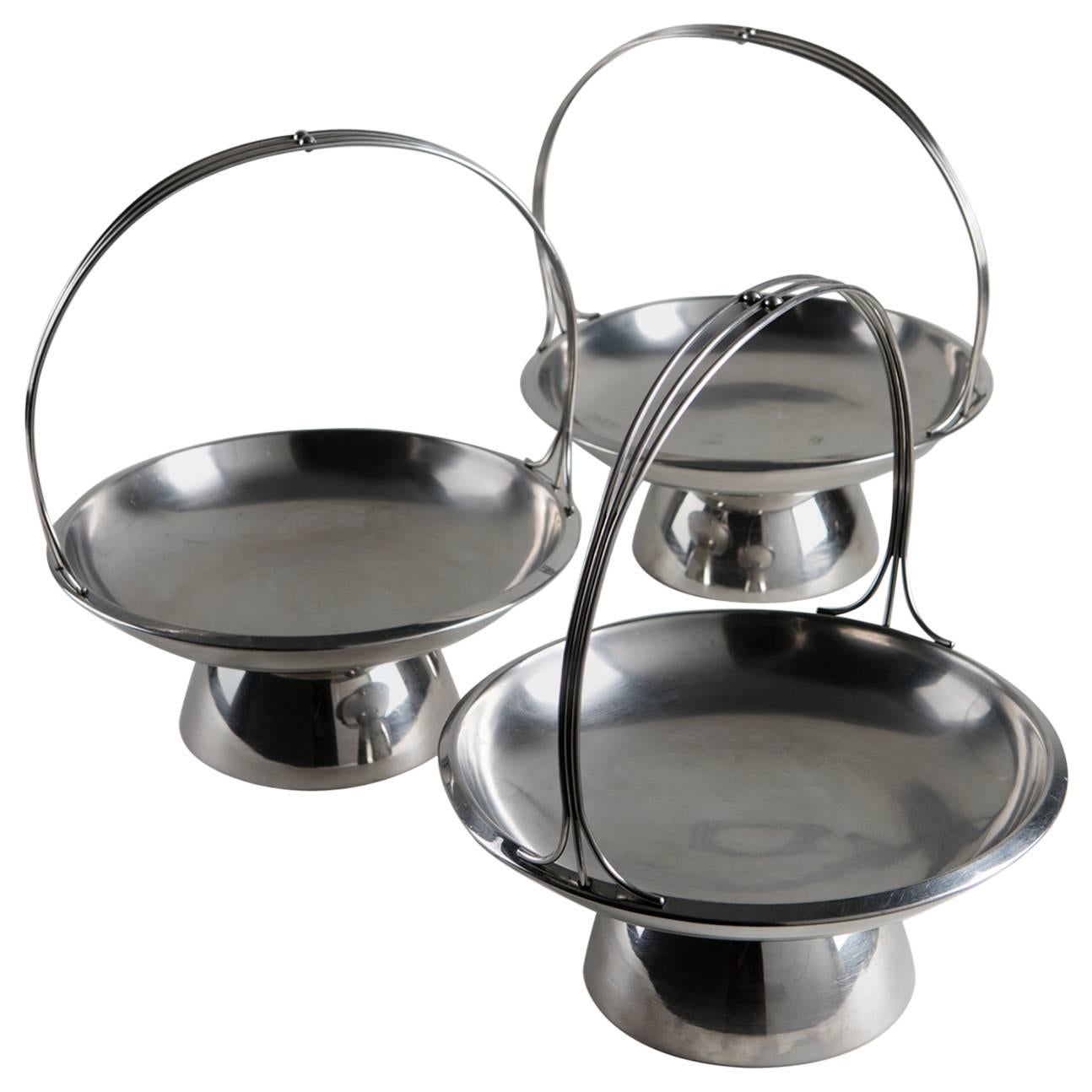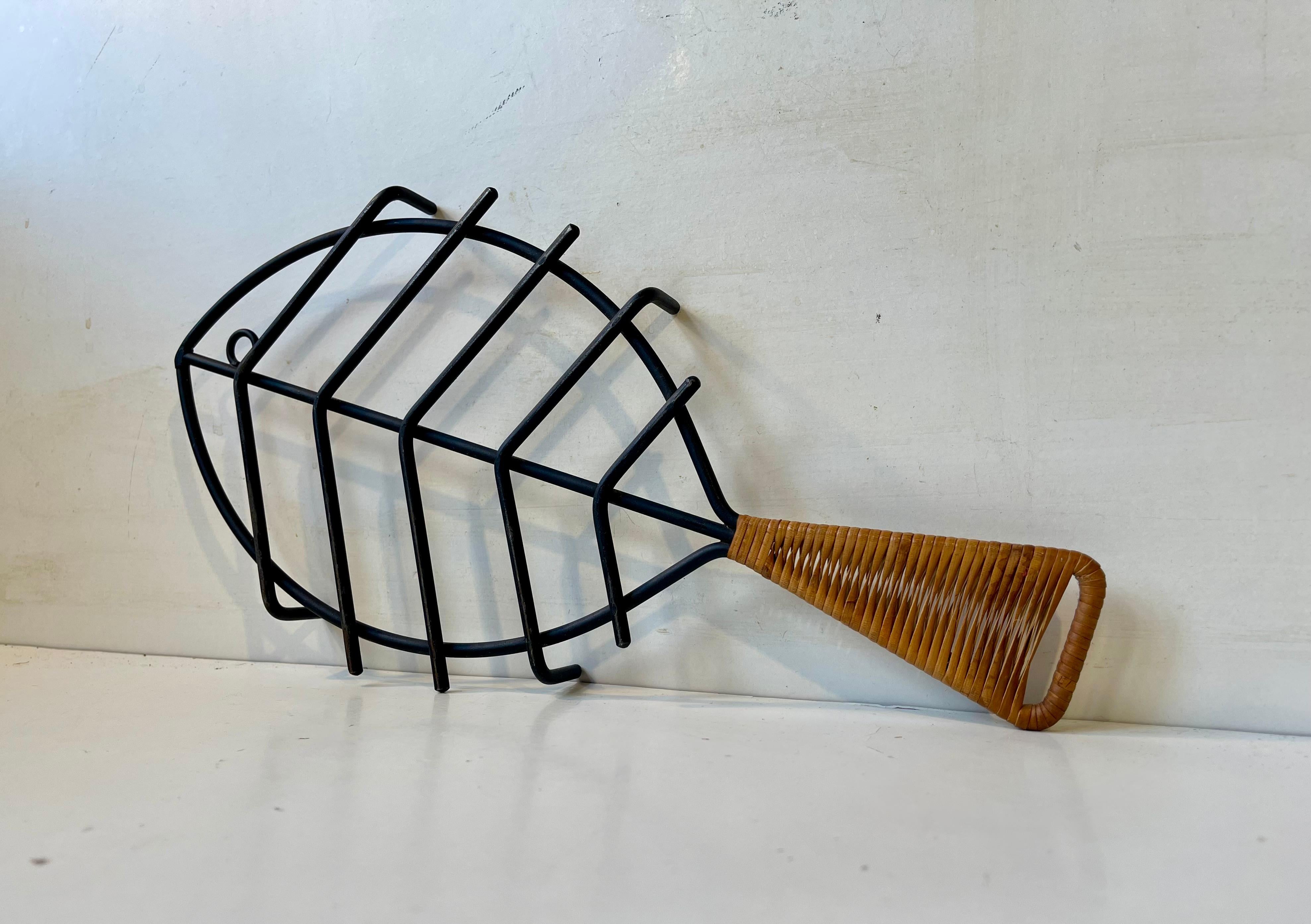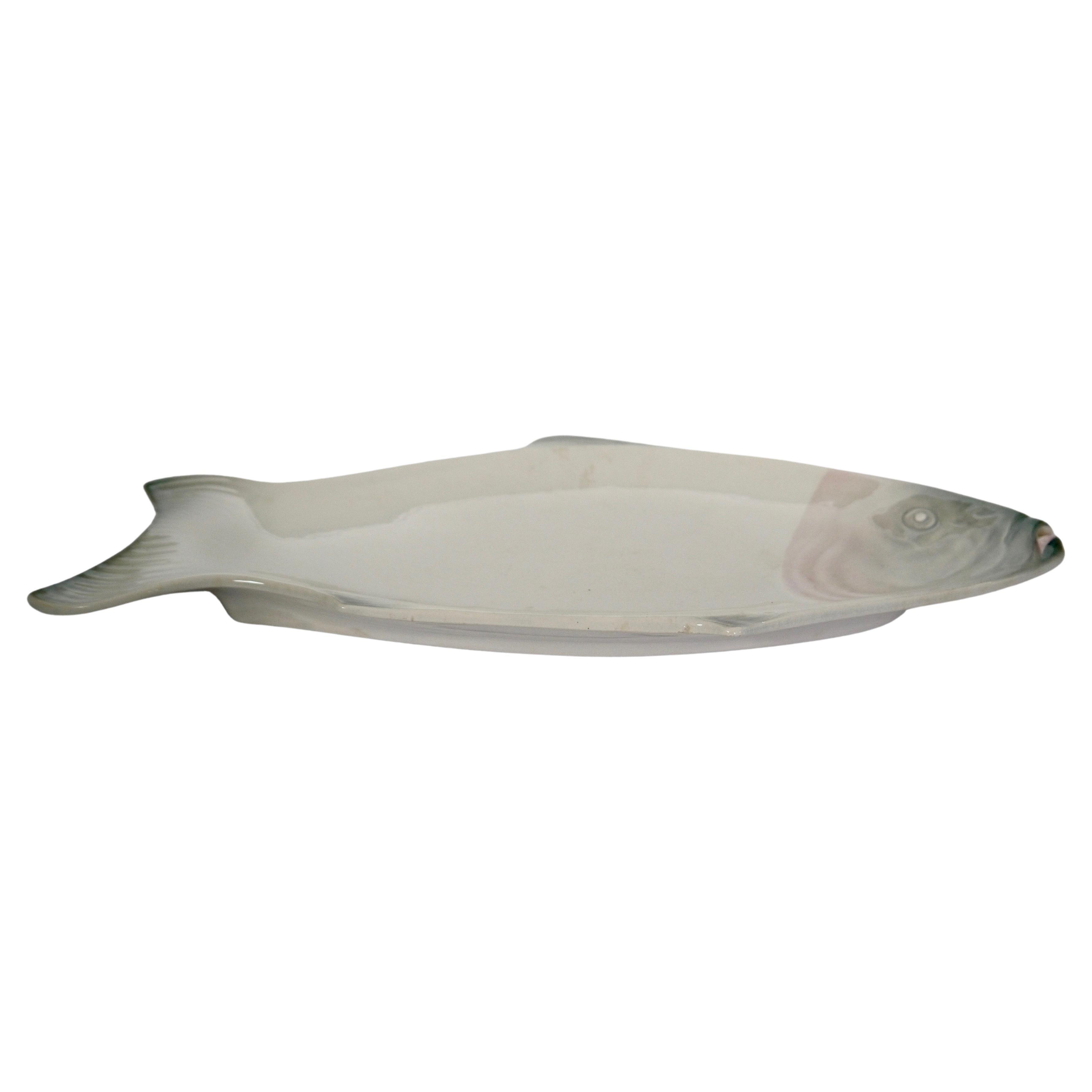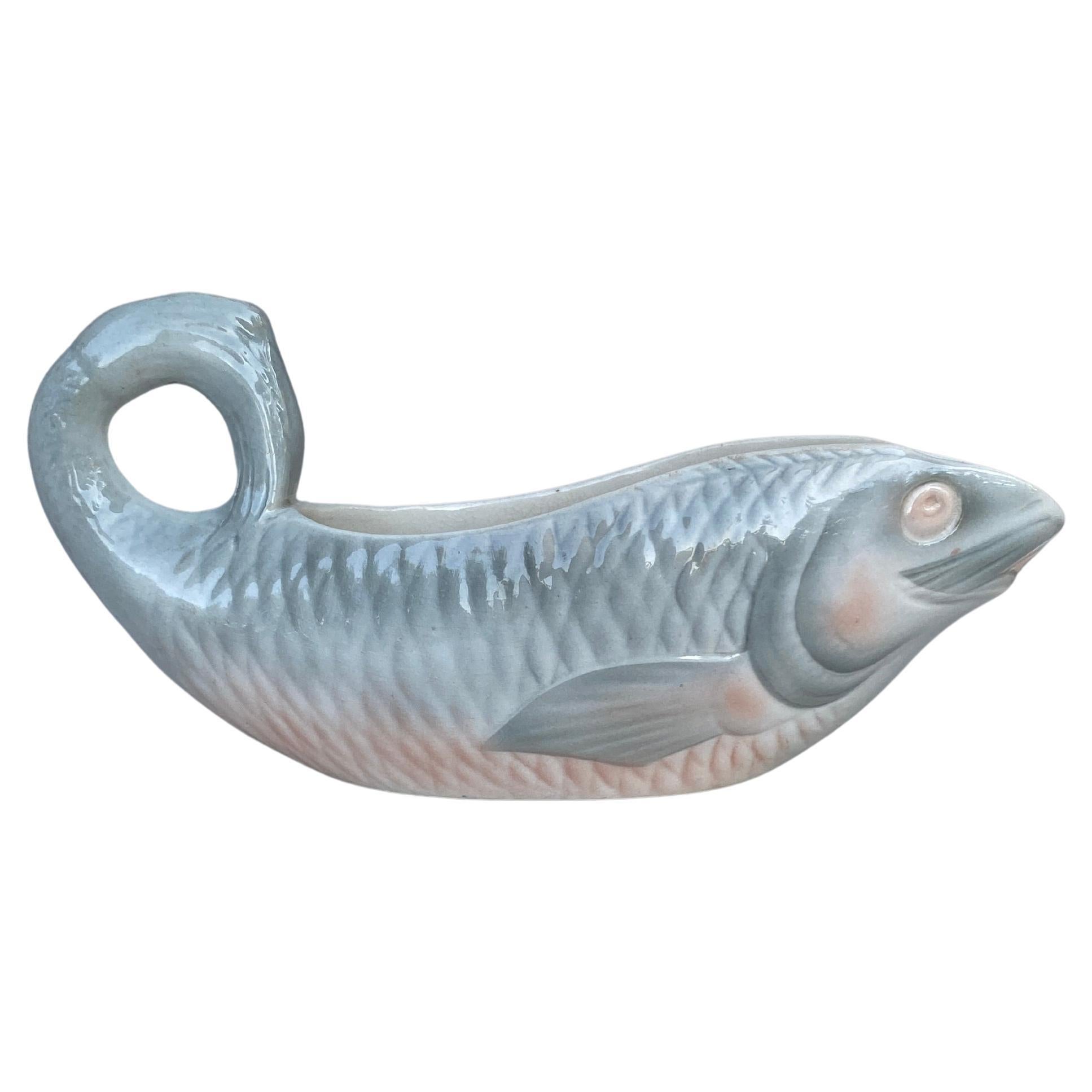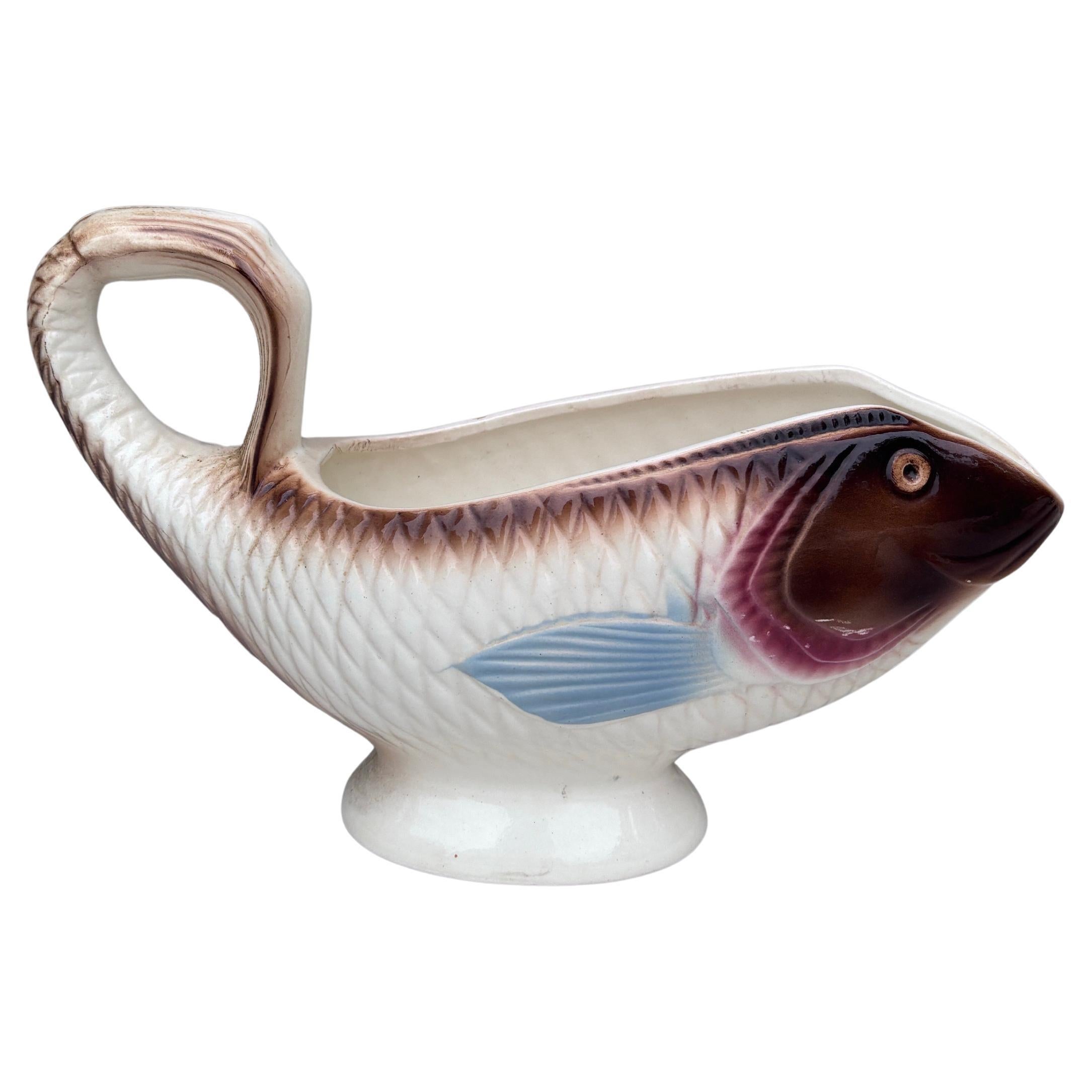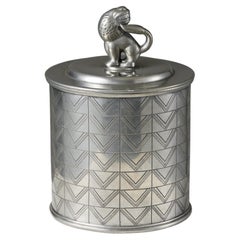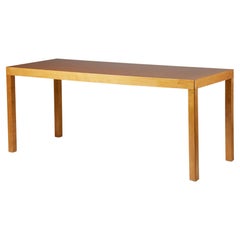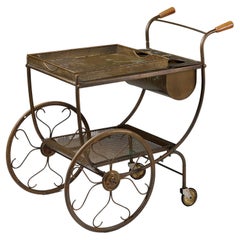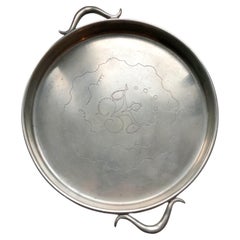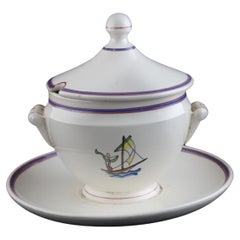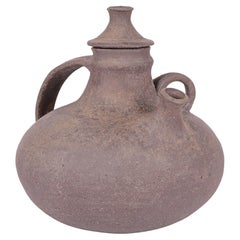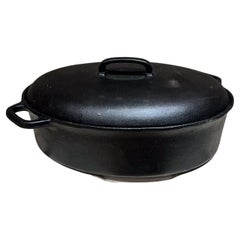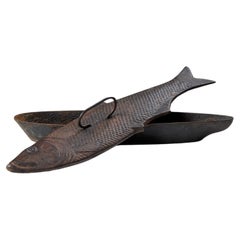
Lidded vessel iron fish designed by Tore Wretman for Svenskt Tenn, Sweden, 1930s
View Similar Items
Want more images or videos?
Request additional images or videos from the seller
1 of 9
Lidded vessel iron fish designed by Tore Wretman for Svenskt Tenn, Sweden, 1930s
About the Item
- Dimensions:Height: 2.56 in (6.5 cm)Width: 12.21 in (31 cm)Depth: 3.15 in (8 cm)
- Style:Mid-Century Modern (Of the Period)
- Materials and Techniques:
- Place of Origin:
- Period:
- Date of Manufacture:1930s
- Condition:
- Seller Location:Stockholm, SE
- Reference Number:1stDibs: LU1006636277992
About the Seller
5.0
Recognized Seller
These prestigious sellers are industry leaders and represent the highest echelon for item quality and design.
Established in 1998
1stDibs seller since 2013
202 sales on 1stDibs
Authenticity Guarantee
In the unlikely event there’s an issue with an item’s authenticity, contact us within 1 year for a full refund. DetailsMoney-Back Guarantee
If your item is not as described, is damaged in transit, or does not arrive, contact us within 7 days for a full refund. Details24-Hour Cancellation
You have a 24-hour grace period in which to reconsider your purchase, with no questions asked.Vetted Professional Sellers
Our world-class sellers must adhere to strict standards for service and quality, maintaining the integrity of our listings.Price-Match Guarantee
If you find that a seller listed the same item for a lower price elsewhere, we’ll match it.Trusted Global Delivery
Our best-in-class carrier network provides specialized shipping options worldwide, including custom delivery.More From This Seller
View AllPewter Jar with Lid Designed by Estrid Ericson for Svenskt Tenn, Sweden, 1930
By Estrid Ericson
Located in Stockholm, SE
Pewter jar with lid designed by Estrid Ericson for Svenskt Tenn,
Sweden, 1930.
Pewter.
Stamped.
H: 21.5 cm / 8 1/2''
D: 15 cm / 6''
Provenance: Actor Anders de Wahl (18...
Category
Mid-20th Century Swedish Mid-Century Modern Jars
Materials
Pewter
Mirror Designed by Estrid Ericson for Svenskt Tenn, Sweden, 1930
By Estrid Ericson
Located in Stockholm, SE
Mirror designed by Estrid Ericson for Svenskt Tenn,
Sweden, 1930.
Pewter and mirror.
Measures: H: 62.5 cm / 2' 1/2''
W: 41 cm / 16''
D: 2 cm / 3/4''.
Category
Mid-20th Century Swedish Mid-Century Modern Mirrors
Materials
Pewter
Library Table Designed by Uno Åhrén for Svenskt Tenn, Sweden, 1930
Located in Stockholm, SE
Library table designed by Uno Åhrén for Svenskt Tenn,
Sweden, 1930.
Elm.
Early maker's mark underneath the surface.
H: 75 cm
L: 180 cm
W: 70 cm.
Category
Vintage 1930s Swedish Mid-Century Modern Dining Room Tables
Materials
Elm
1950s Swedish Metal Tea Trolley for Svenskt Tenn – Mid-Century Design
Located in Stockholm, SE
Tea trolley, anonymous, for Svenskt Tenn,
Sweden, 1950s.
Metal.
Dimensions:
H: 63 cm / 2 3/4''
W: 76 cm / 2' 6''
D: 43 cm / 17''.
Category
Mid-20th Century Swedish Mid-Century Modern Tables
Materials
Metal
Occasional Table Designed by Josef Frank for Svenskt Tenn, Sweden, 1950s
By Josef Frank
Located in Stockholm, SE
Occasional table designed by Josef Frank for Svenskt Tenn,
Sweden, 1950s.
Mahogany.
Measurements:
H: 60 cm/ 23 1/2''
Length when extened: 104 cm/ 3' 5''
D: 54 cm/ 21 1/2''
Jose...
Category
Vintage 1950s Swedish Scandinavian Modern Side Tables
Materials
Mahogany
Occasional Table Designed by Josef Frank for Svenskt Tenn, Sweden, 1950s
By Josef Frank
Located in Stockholm, SE
Occasional table designed by Josef Frank for Svenskt Tenn,
Sweden. 1950s.
Mahogany.
H: 45 cm
L: 80 cm
D: 40 cm
Josef Frank was a true European, he was also a pioneer of what would become classic 20th century Swedish design and the “Scandinavian Design Style”.
Austrian- born Frank started his design career as an architect after having trained at the Technische Hochschule in Vienna between 1903 and 1910. After his training he went on to teach at Kunstgewerbeschule (The Viennese School of Arts and crafts) where he developed and espoused the new school of modernist thinking towards Architecture and Design that was coming to fruition in Vienna at the time. He also went on to lead the Vienna Werkbund throughout the 1920s. This was a truly progressive group of Architects and Designers who set about improving the daily lives of Austrian people through modernist design and architecture in partnership with Arts and Crafts ideals and construction. Frank’s leadership of the Werkbund had already cemented his place at the forefront of European design.
Frank’s time in Vienna was typified by his design for the “Die Wohnung” exhibition of the Deutscher Werkbund in Stuttgart, 1927 where he exhibited along side his contemporaries at the forefront of design, such as the likes of Le Corbusier and Walter Gropius. Here he showed a specially designed pair of flat-roofed reinforced concrete houses in what is now seen as a typical modernist style.
What separated Frank’s house from the other 32 houses of the exhibition was the interior and furniture inside the building. It was described as “Neo-Classical” and filled with an eclectic mix of period pieces, modern design and pieces designed by Frank himself that seemed to cross the two worlds. This was a complete opposite direction to that which his fellow Architects were travelling in with their pared back and angular aesthetics. Frank said of his own work: “The house is not a work of art, simply a place where one lives,” and by this reasoning Frank rejected the regimental mechanisation of the living space that his contemporaries believed in, instead he set about creating congenial and spontaneous interiors. Frank’s practice saw him placing the bright colours and the soft forms of nature back into the furnishings and interiors that he thought modernism sorely mist.
Frank, along with Oskar Walch set up Haus und Garten in Vienna in 1925. This was Frank’s first commercial foray into furniture and home furnishings and the company went on to become the most influential furnishing house in Vienna with a riotous depth of colour and interesting shapes becoming the trademark of their design. However this success was to come to an end with rise of Nazism in Vienna in the early 1930’s. Frank was Jewish, and he and his wife Anna decided they would leave Vienna for her motherland: Sweden, in 1933. Frank continued to design for Haus and Garten, visiting Vienna occasionally and designing the pieces that would continue to be the company’s best...
Category
Vintage 1950s Swedish Scandinavian Modern Tables
Materials
Mahogany
You May Also Like
Scandinavian Modern Tray from Firma Svenskt Tenn, 1930s
By Nils Fougstedt, Svenskt Tenn
Located in Stockholm, SE
A early tray attributed to Nils Fougstedt from Firma Svenskt Tenn in Stockholm, Sweden. Svenskt Tenn is today on of the most popular interior brands...
Category
Vintage 1920s Swedish Scandinavian Modern Tableware
Materials
Pewter
Gravy Dish by Gio Ponti for Richard Ginori, 1930s
By Richard Ginori
Located in Montelabbate, PU
Salsiera decorum arrltium Gio Ponti St. Christopher. S.C.R.G. Richard Ginori Ceramics Society, circa 1930
Category
Vintage 1930s Italian Art Deco Serving Pieces
Materials
Ceramic, Porcelain
$520 Sale Price
25% Off
ODK Norwegian Unusual Large Brutalist Lidded Studio Pottery Vessel
Located in Bishop's Stortford, Hertfordshire
A large and stylish unusual Norwegian brutalist studio pottery lidded vessel in the form of a tea or water pot with makers marks ODK to the base and believed to date from the mid-20t...
Category
Mid-20th Century Norwegian Mid-Century Modern Ceramics
Materials
Stoneware
1960s Ronneby Design Sigurd Persson Cast Iron Casserole Sweden
By Sigurd Persson
Located in Chula Vista, CA
AMBIANIC presents
1960s Sweden Cooking Pot Large Casserole Cast Iron Pan
Stamp by maker
Ronab Ronneby Design Sigurd Persson Large Casserole Pot Sweden
6...
Category
Vintage 1960s Swedish Scandinavian Modern Serving Pieces
Materials
Iron
Upsala Ekeby, Einar Luterkort, Ceramic Fruit Service, 1+10 Pcs, Sweden, 1930s
By Upsala Ekeby, Einar Luterkort
Located in Bochum, NRW
Einar Luterkort (1905-1981) for Upsala Ekeby; 1930 "Jazz" pattern fruit service, with large serving platter and ten smaller plates, with a different motif. Excellent used condition. ...
Category
Vintage 1930s Swedish Art Deco Serving Pieces
Materials
Ceramic
1930s Indu Bronze Teapot
Located in Marbella, ES
1930s indu bronze teapot.
Category
Early 20th Century Indian Serving Pieces
Materials
Bronze
$1,851
Recently Viewed
View AllMore Ways To Browse
Used Cantoni Furniture
Used Dock Cleats
Used Ethan Allen Coffee Table
Used Fiberglass Full Size Horse
Used Greenland Paddle
Used Kincaid Bedroom Furniture
Used Mallin Patio Furniture
Used Mesh Lockers
Used Murphy Bed Cabinet
Used Pony Cart
Used Rolling Chalkboard
Used Sheep Tilt Table
Used Soapstone Sinks
Used Sousaphone
Used Teak Adirondack Chairs
Used Twin Trundle Bed
Used Weber Kettle
Used Wooden Bunk Beds
